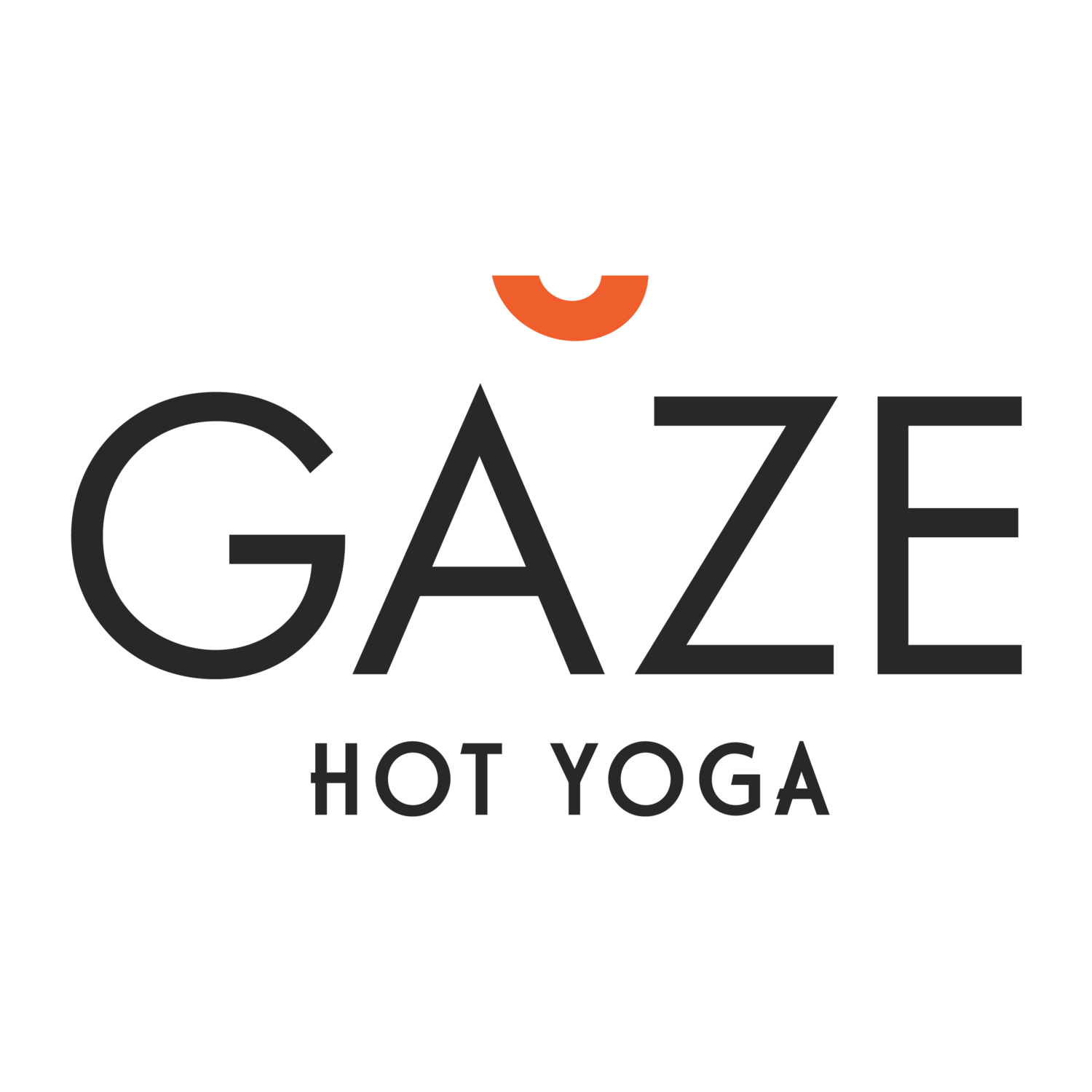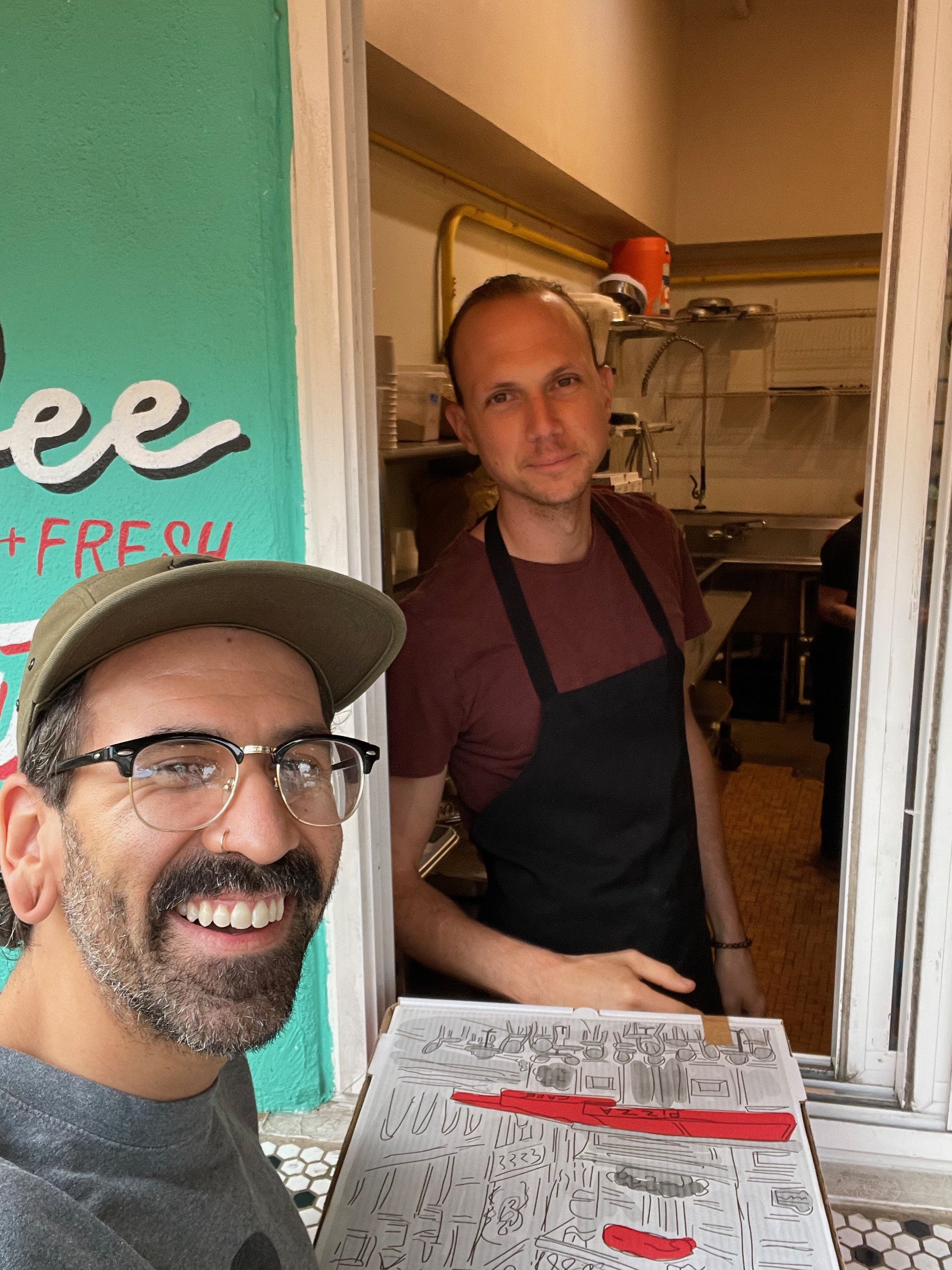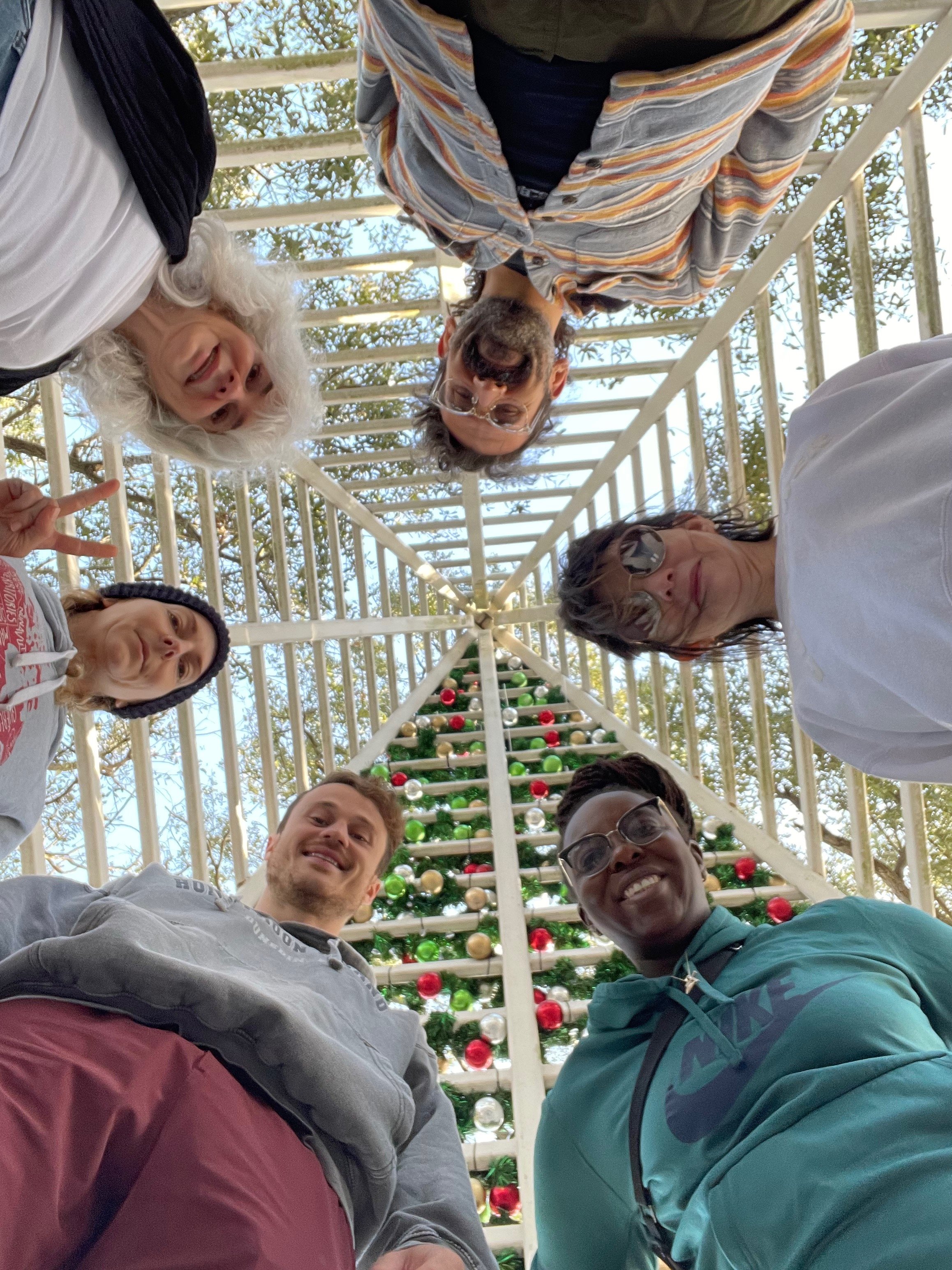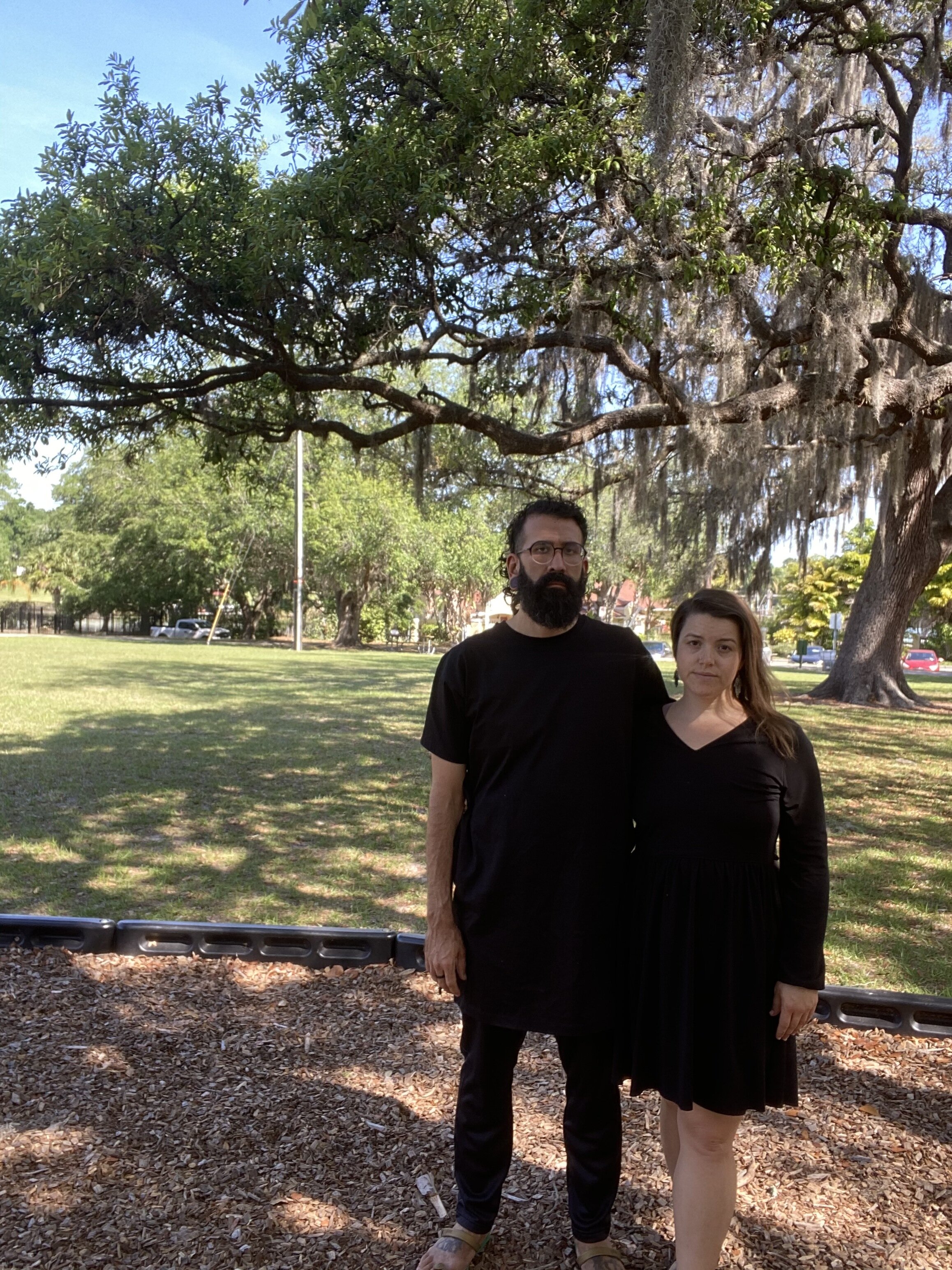This was 2024
As this year is winding down, we wanted to send this message to thank you. Everyday when you show up for class you bolster your ability to discern yourself from the noise, move without pain, and keep the other parts of your life working well. You also support us. We're honored to guide you, teach where we can, and witness you doing incredible things here.
Our mission here at Gaze is to help folks be healthy and have faith in their human spirit through positive reinforcement and authentic teaching in yoga classes that are simple and clear. We believe that our health depends on our faith in our ability to affect it, and the most simple changes can have a hugely transformative affect.
You are strong and we're here to remind you of that. You are valued and if you feel that gaze has been valuable to you we are thrilled about it.
JANUARY | 60 Day Challenge
Theodore’s 1000th Class
FEBRUARY | Teacher Training Begins
Best friends celebrating 100 classes together. Collectively they've been in 203 classes since.
March | Thai Massage Workshop
April | Teacher Training Graduation
May | Happy Birthday Maryam!
Supernatural Doughnuts for Mother's Day
June | Hatha Strong
July | Hot Room Glow Up
Sandy's 1000th Class
August | Bingo!
Every finisher got a t-shirt!
September | Welcome to the Club
October | Helene and Milton
And Hurricane Relief
November | Happy Birthday Gaze!
December | Another Teacher Training Graduation
Thank you for a fantastic year!
The Upside Down Teacher.
Symbolically, this action communicates that what the heart feels can then be transferred to the brain, momentarily allowing intuition to be above logic.
Why I am excited to teach the 4 month Upside Down Series
Simply put, an inversion is orienting the body so that the heart is higher than the head. That’s it, nothing fancy– this action is accessible to pretty much anyone. With that being said, let me list the reasons why I am excited to teach the Upside Down series!
Symbolically, this action communicates that what the heart feels can then be transferred to the brain, momentarily allowing intuition to be above logic. This idea creates space for the practitioner to explore the limiting thoughts, or rational thinking that often supersede the gut feeling.
Visually, when Upside Down, you can’t avoid the reality of what you see turned upside down. You now have to try and make sense of what your mind is taking in from a whole new perspective. Again, challenging the status quo/default thinking.
Physiologically, the changing the direction of the pull of gravity on the muscles, bone structure and the inner workings of the many body systems brings benefits that allow the body and mind to feel better (with a consistent Upside Down/inversion practice).
The Upside Down Student.
This year, I’ve decided to work on it. Not because I want to do a headstand, but because I want to have a well-rounded yoga practice and this is an area that I’ve been purposely leaving out.
The Upside Down is a four-part workshop series that creates foundational yoga practices for inversions (in yoga, an inversion is any posture or position where the head is lower than the heart). Mary Waugh is going to be leading the series and I’m going to be taking the workshops purely as a student– and a very beginning student at that.
I am afraid of being upside down, especially if I have my hands on the floor. I’ve had serious wrist injuries throughout the years, have broken my elbow, and have ripped both rotator cuffs at different times of my life. I suffer from severe migraines, vertigo, motion sickness, and tinnitus. I’ve gotten too dizzy just by looking down in the past. The things that I am able to do now come from a lot of hard work to make myself a not very impressive looking yogi. I did not come into a yoga practice because I had any physical aspirations because I thought that I was THAT broken. I started to practice yoga as a way to settle my mind. Being able to do a handstand was something that I never aspired to do– I didn’t even get to the place where I felt it was unattainable. I simply never wanted a life where I had to do it. Ever.
This year, I’ve decided to work on it. Not because I want to do a headstand, but because I want to have a well-rounded yoga practice and this is an area that I’ve been purposely leaving out. Mary gave me a little deep cut of her philosophy of inversions and as a person of the mind, I am interested in being able to expand my mind and my perspectives. I am not really an adventurous person. I like doing the same thing a lot. And I avoid things that I’m not good at. That said, I’m justifying this because expanding my mind and looking at things from a different perspective is in my wheelhouse.
Earlier today, I did a little pre workshop work with Mary to create some videos for the series. We did some drills for the workshop on camera. As expected, I was humbled. But thankfully, at the same time, I was a little less scared about it than I was going in. Everything was doable and it made me see what homework I needed to do faithfully.
If you wanna have a homework date with me for four straight months, come do this with me!
Learning in the face of knowing.
If you haven’t already heard, Gaze has doubled in size! We have a new yoga room that has been open for about a week.
When we start out in our yoga practice we are learning so much! Every class, every posture, every breath is like a discovery. Maybe this is why it doesn’t take long to start to form opinions, settle in a certain routine, and in some cases, start to form a feeling of superiority.
As we gain knowledge and experience there will inevitably be things that get much easier, and some of the incentive to keep learning about them goes away. We might practice for a long time without noticing this because there are more and more advanced things to progress to.
At a certain point, it gets pretty obvious because — we get so bored we quit, or decide to only practice one very particular way, or only practice with teachers that are teaching everything as we know it. It takes practice; just like a posture, to return to learning from knowing. In this way knowing can be a real barrier to learning.
This concept is really the force at the heart of the growth of our studio. Every couple years, as a business, we get to return to learning from knowing. Each step forward is an exercise in humility, leaning into fear, and such and awesome force to witness.
If you haven’t already heard, Gaze has doubled in size! We have a new yoga room that has been open for about a week. The options in the new room might feel like wild departure for you. They certainly were for me. For me this departure has been amazing. Instead of imprinting my teaching onto everything, i’ve been able to offer all of my friends a place to teach and learn from them. peep the new schedule here. I hope to see you soon:)
Wes Bozeman was Nationally Certified in Therapeutic Massage and Bodywork in 2009 and is a Florida Licensed Massage Therapist. MA58298 He began his massage practice after the birth of his daughter, when substandard maternity care cast a light on the value of bodily knowledge and wellness for his whole family. He began his yoga training in 2010 at Evolation Yoga in Tampa. Since then he has studied with Ida Jo and Scott Lamps at Ghosh Yoga, and countless other mentors along the way. He owns Gaze Hot Yoga in Tampa Heights where he teaches students, and teachers, and is happy to be their student too. Wes’ only goal for his practice is to empower his clients to be aware of their bodies, and facilitate healing.
2 birthdays, pandemic betwixt.
Can you contribute to your health by showing up even if there is something holding you back?
Celebrating a year happens everyday. We're always a year since this day last year and depending on the contents of that year, maybe the day is worth celebrating. Birthdays are a simple way to look back over a year because everyone has one. Having an April birthday has really framed up my year nicely, although it's been an interesting year for everyone on earth.
The Vision statement at Gaze is: A secure and supportive community of healthy people who hold faith in their human spirit.
This vision has been tested, realised, tested again, and continues to guide what I aim to do in my life. And where I hope to continually steer the business.
During the shutdown, reopening, and nearly a year of operating with increased safety measures in place, I've questioned each aspect of this statement. What the heck is health? For the past year health has been a daily prayer, a wish, and a gratitude practice.
"Yoga does not just change the way we see things, it transforms the person who sees" - BKS Iyengar
This quote comes to mind when I consider the second part of the vision statement. My health has been supported through the commitment to something greater than health. Spirit is the piece that says what are you going to do today? Are you grateful and building or are you weary and resting. Can you contribute to your health by showing up even if there is something holding you back?
My physical practice, has grown so much because of my willingness to transform, to try another angle. These past two birthdays have plugged me in to a new idea of health. One that includes willingness, gratitude, and patience.
Thank you so much to the entire studio community for celebrating me on my birthday and being this vision. Thank you also to all the folks at Jedi Fight Club for giving this next year a kick off I will never forget.
Wes Bozeman was Nationally Certified in Therapeutic Massage and Bodywork in 2009 and is a Florida Licensed Massage Therapist. MA58298 He began his massage practice after the birth of his daughter, when substandard maternity care cast a light on the value of bodily knowledge and wellness for his whole family. He began his yoga training in 2010 at Evolation Yoga in Tampa. Since then he has studied with Ida Jo and Scott Lamps at Ghosh Yoga, and countless other mentors along the way. He owns Gaze Hot Yoga in Tampa Heights where he teaches students, and teachers, and is happy to be their student too. Wes’ only goal for his practice is to empower his clients to be aware of their bodies, and facilitate healing.
Music Class Musings
At Gaze, a music class is a 60-minute 26&2 practice that is practiced with a playlist (or possibly DJ (shoutout to Mr. Bongos) in the background. Oftentimes, the teacher also practices with the class, which is a departure from the more common format of having an instructor stand on a podium giving only verbal cues to guide the class. This month, the studio has added an additional “music class” to the schedule on Wednesdays at 6:30pm, in part to help facilitate the bingo challenge for March. I love music classes (to the point that I know that people think I’m a little too crazy about them), but this week, I’ve been thinking a lot about how I have changed in my thinking on music class. This may come as a surprise to many, but I used to not only dislike music classes, I refused to even go to them.
I’ve been practicing 26&2 since the mid-1990s and solidified the regularity of my practice in very strict yoga studios—even the color of your mat and towel was regulated as well as wardrobe (no green, no leggings or long pants, period!). For a time (that I do not recommend to anyone—it wasn’t a nice time), I practiced two 90-minute classes per day, one early morning, one late evening, working that non-stop NYC hustle in between. The classes were strict and formal, both attributes I tend to lean into comfortably in my professional and personal lives.
When I moved to Tampa, I had a very hard time finding a studio that was a good fit for me and when I did, I wasn’t very happy about transitioning to concepts like “60 minutes” and “warm”, but I found that my practice blossomed in surprising ways when I did. Lately, I’ve found that maybe there’s more to my yoga life than a 26&2, although first loves are always the greatest loves and there’s a certain level of comfort that I have in a Hot 90 that I just don’t feel otherwise. Maybe it’s the practice itself, but maybe it’s nostalgic feelings of my youth before the more difficult adult periods of my life started to settle in and change me.
In any case, the hardest “new” practice for me to adopt was the music class. I lived a very solitary and rather regimented academic life. I am comfortable in silence, with stillness. Music was distracting. And all-consuming! I spent a very formative part of my young adulthood as a musician, serious enough a viola player to be in multiple performance and theory courses in college. I spent many hours alone in a small practice room perfectly content and happy. Broken hands and injury made me put that aside many years ago. But I love music of all sorts very much and very deeply. I spent most of my time at home alone with my music and it’s a time and a place where I feel safe and incapable of bothering anyone or being bothered by anything.
The first few times I took a music class as a student, I had a very hard time. I felt like I couldn’t balance, couldn’t be still, couldn’t focus. But over time, I got better, probably with the realization that I was just in the room and that was probably good enough. I was a very late adopter in teaching music classes at Gaze. I was very happy to go to other music classes and even allowed myself to be excited for a playlist with a genre or artist that I loved. But I get very fussy about things—timing things, breathing things, cadence things. I’m a linguist who used to play in the symphony and spent her time in pit orchestras in her spare time and linguistics labs in her working hours. I didn’t think that I could actually loosen up enough to do it well. The first time I did teach a music class was accidental. A class needed coverage and my need to be useful overtook my fear of failure. And that was that. Since then, they’ve become my favorite class to teach other than the Hot 90.
I was a child of the 1980s when a mixtape on a cassette tape was a love letter from the soul. You can tell a lot about people based on the playlists they make. This last month of music classes at Gaze, I feel exactly that feeling. Each music class playlist is a love letter from my soul to the studio. And with each class, I feel like I expose myself a little bit more and allow my heart to open a little more each time I let someone else listen. My teaching is looser and more fun and irreverent in music classes. I’m very aware that I can bring that into my other classes, but I choose not to do so. I’ve made creating playlists my hobby and in keeping those classes special for me, it’s also been a gift to myself as a time to reconcile myself to the tender moments of my past and to allow myself to grow in ways that I didn’t realize needed tending.
Some of you might be like me with my yoga practice, finding comfort and growth in the quiet reflection of the changing sameness of the 26&2 in 90 minutes. I get it. The heart wants what the heart wants, what can I say? But this year, I’ve forced myself to grow more and change more and even though not everything has gone the way I’ve wanted, I’ve felt my eyes stay open more easily with difficult forced experimentation of self. And if that’s not yogic, I really don’t know what else is.
Maryam Bakht is a fitness coach and yoga teacher specialising in purposeful movement and mental strength and clarity. Maryam holds a PhD in Linguistics from NYU and in her time as a college professor has developed methods for practicing calmness and rest as a way to become more efficient and effective in work.
The best practice tool is sitting on the back of your Grandma's piano.
Tempo is a very simple parameter to follow, and can move the mind away from other more subjective factors specific to each discipline.
A metronome can be an effective tool in many disciplines. It's like a clock without the minute and hour hands, and the tempo is usually adjustable. It's not just for little kids learning piano anymore! For most these days, it's just an app on your phone or watch, and there's tons of adjustability. You really don't need anything too fancy though.
Tempo is a very simple parameter to follow, and can move the mind away from other more subjective factors specific to each discipline.
It works for just about anything, but these are a few suggestions.
Pranayama (breathing practice) The most simple forms of breathing practice involve consciously matching or un-matching the length of the inhale and exhale. When there's a steady tempo ticking away, the length of the breath is both really easy to measure, and focus on. When you're starting out try 60-80bpm (beats per minute) and find a speed that is comfortable. For even counted breath try 4:4 and increase both numbers gradually. For un-even breath try 4:6 and over time increase the length of the exhale and maybe decrease the length of the inhale.
Asana (posture practice) when you're practicing postures, the metronome can keep time in the phases of each posture. For example, 5 beats to move into the posture, 5 to be still, 5 to come out, 15beats of stillness in between. If you're doing a posture practice that "flows" try to time your transitions 5 beats apart. Not only is it fun, but it moves the mind away from the depth and look of the posture and back to what the purpose is. 60-80bpm is a good place to start, and test out what spot is most comfortable. This is an example of a counted practice from Esak Garcia. Something like this works well at a steady tempo.
Running. This may seem weird, and might get some weird looks from other folks on The Riverwalk. I've experienced this first hand. Listening to a metronome while running brings the focus back to cadence, or the speed at which your feet are hitting the ground. When cadence is the focus, speed at any cost can take a back seat, to the best possible mechanics. For something that is a very repetitive movement, staying focused on what you're doing can get boring fast, and your body will adapt so your mind can stay distracted. At least as long as it can. If your mind stays engaged you can make intuitive decisions that might make the difference in your body's ability to keep running. If you're a runner, you already know changes in your training need to be handled very carefully, so go easy on yourself. I recommend starting with 165-180bpm. This pace will likely feel a little fast. Remember it is only for cadence, not speed, so you can shorten your stride and slow down when you need to.
Lifting weights. Slowing down during the eccentric phase of a lift has been shown build muscle more effectively. As they say, "lower slower, gain faster.” With this in mind, set your metronome to 60-80bpm and test during your lifts. You can start out with a 3:1 ratio eccentric:concentric and increase the first number as your comfort increases.
In general, you might be thinking, "Isn't there a playlist on Spotify called 170bpm?" Yep. A bunch actually. But if our goal is to refocus the mind on the important parts of each discipline, bringing music into the mix, might be trading a zig for a zag.
Give these a try and see how it goes. Take a look in the app store and find a metronome app that works for you. It's the original Tik Tok.
Wes Bozeman was Nationally Certified in Therapeutic Massage and Bodywork in 2009 and is a Florida Licensed Massage Therapist. MA58298 He began his massage practice after the birth of his daughter, when substandard maternity care cast a light on the value of bodily knowledge and wellness for his whole family. He began his yoga training in 2010 at Evolation Yoga in Tampa. Since then he has studied with Ida Jo and Scott Lamps at Ghosh Yoga, and countless other mentors along the way. He owns Gaze Hot Yoga in Tampa Heights where he teaches students, and teachers, and is happy to be their student too. Wes’ only goal for his practice is to empower his clients to be aware of their bodies, and facilitate healing.




































